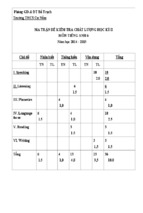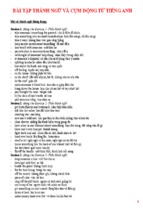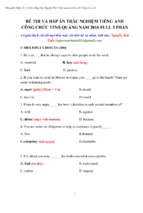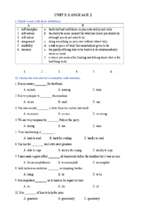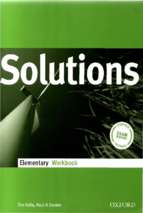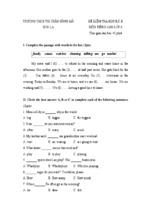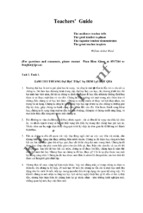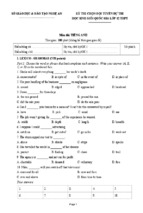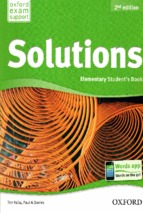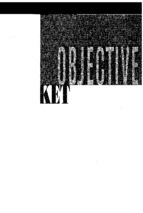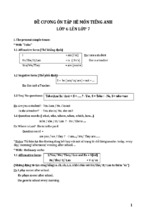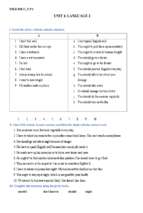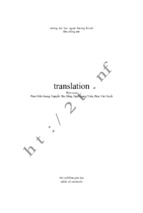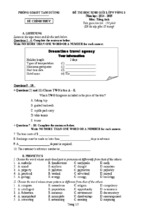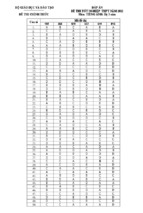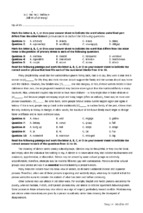BINH DINH DEPARTMENT OF EDUCATION AND TRAING
AN LUONG HIGH SCHOOL
----- « -----
THE INITIATIVE
USING COLLOCATIONS TO IMPROVE
STUDENTS’ VOCABULARY
Author : Tran Xuan Truong, MA
Group : English
Phu My, March 2014
1
TABLE OF CONTENTS
Page
LIST OF TABLES..........................................................................................................iv
LIST OF FIGURE..........................................................................................................v
PART A :
INTRODUCTION
I. The Statement of Problem...................................................................................1
1. The Reality of The Problem Requiring New Solution to solve..............................1
2. The Meaning and Effect of the New Solution........................................................2
3. The Scope of the Study..........................................................................................2
II. Method and Procedure........................................................................................3
1. Literature review and theoretical background.................................................3
Literature Review...........................................................................................................3
Theoretical Background..................................................................................................3
1.2.1 The role of vocabulary in English teaching and learning process.....................4
1.2.2. Collocations and classification of collocations.....................................................6
. Definition of Collocations.............................................................................................8
1.2.2.2. Classification of Collocations............................................................................8
2. Measures for Implementing and Time to Create This Solution.................................19
2.1.Research Design and Procedures.........................................................................19
Research Design..................................................................................................19
Research Procedures............................................................................................19
2.2. Methods of Data Collection..........................................................................20
2.3. Population of the Data Collection.................................................................22
2.3.1. The Population of the Questionnaires........................................................22
2.3.2. The Population of the Classroom Observation...........................................22
2.4. Data analysis.................................................................................................22
PART B:
CONTENT
I. Aims and Objectives.............................................................................................23
II. The Description of The experience Initiative’s Solution.........................................
2.1. Findings and discussion.....................................................................................
2
2.1.1.Students' Ability of Using Collocations ............................................................23
2.1.2.Collocational difficulties for Secondary Students..................................................
2.1.3. Variety of Tasks to Improve Students’ collocability ............................................
2.1.4. Implementation of the Learning Activities in the English Textbook....................31
Learning Activities Developed in the English Textbook...............................................32
2.1.4.2.
Frequency of Organizing Learning Activities in the Textbook …….. 36
2.1.4.3.The Influence of the Learning Activities in the English Textbook
on Students' collocability ............................................................................38
2.1.5. Teacher's Role and Classroom Atmosphere in Enhancing Students' Collocability
41
2.2. Implications for enhancing students' activeness in learning English …49
2.2.1 Textbook Renovation....................................................................................49
2.2.2. Improving the Teacher's Classroom Management.........................................53
2.2.3. Other Suggestions.........................................................................................55
PART C: CONCLUSION AND SUGGESTIONS FOR….. 56
FURTHER RESEARCH
REFERENCES
Survey questionnaires
APPENDIX 1 __ For teachers APPENDIX
2 __
For students
3
PART A: INTRODUCTION
I. THE STATEMENT OF THE PROBLEM
1. The Reality of the Problem Requiring New Solution to Solve
On September 30, 2008 Vietnamese Prime Minister of Education and Training
implemented the Project entitled “Teaching and Learning Foreign Languages in the
National Education System, Period 2008-2020” the goal of the project is that “... by 2020
most Vietnamese students will be to use a foreign language confidently in their daily
communication, their study and work in an integrated multi cultural and multilingual
integrated, multi-cultural and multi-lingual environment, making foreign languages a
comparative advantage of development for Vietnamese people in the cause of
industrialization and modernization for the country”(1)
As a result, attitudes toward learning English has changed dramatically for the
better. Instead of taking English as a compulsory subject at school or a qualification when
applying for a job, learners today tend to use English as a means of communication.
However, learners of English still encounter a lot of difficulties when using the language
and thus produce unnatural and unacceptable sentences. In fact, knowing well semantic
and syntactic rules of a language does not necessarily mean having mastered its uses.
There lies a special conventional combination between words. For instance in English you
say strong wind but heavy rain, though strong and heavy here both mean a lot. Strong
rain can be understood but it obviously does not sound natural and easily provokes a
smile into your listeners. Such combinations are called collocation.
Collocation runs through the whole of the English language. No piece of natural
spoken or written English is totally free of collocation. Choosing the right collocation will
make the speech and writing more natural and more native-like [12]. Knowledge of
appropriate collocations is part of the native speakers' competence. Collocation, therefore
deserves to be a central part of vocabulary learning. However, the term collocation has
been taken into consideration only at higher education level. To most secondary students
in Vietnam, collocation seems to be a quite new concept. For these practical reasons, I
decided to implement the initiative “Improving Students’ Vocabulary Competence
through Collocations”.
4
2. The Meaning and Effect of the New Solution
As mentioned above, collocation has long been a practical concerns in language
teaching and learning. If Learners are not provided with enough knowledge of
collocational patterns of lexical items they may easily be prone to collocational errors,
which can be more disruptive in communication than grammatical errors. Collocations,
which are assumed to make up 70 % of everything we say, hear, read or write in real life
(Lewis 2000) allow learners to process and produce language effectively but have also
been the maim cause of student errors. Take, for example, the phrase “a great deal”,
which means “a lot”. A near equivalent would be “a good deal”, but if we say “a big
deal”, the meaning changes. Moreover, “a large deal” is quite unlikely to occur at all.
Consequently, it is quite understandable why our students, especially at lower levels, fail
to produce “natural” sentences most of the time.
In addition, collocations are quite frequent in most of English profiency tests and
exams, especially in the use of English, which brings about a lot of difficulty to learners.
Unfortunately, collocation is often overlooked in the classroom and not given much
attention in students’ textbooks. Thus it is still a new concept to the majority of secondary
students. Throughout the country, little has been done with collocations in term of
methodology. This initiative, therefore, will hopefully be beneficial for English learners.
3. Scope of the Study
With a limited fund of time and ability, this study only investigates collocations and
some techniques that can help improve collocability of 39 tenth-form students
participating in new English textbooks National Foreign Languages Project 2020 (NFLP)
at An Luong High School. The paper also work our some activities in the Piloting English
Textbook grade 10 for enhancing students' collocability in learning English.
5
II. METHOD AND PROCEDURE
1. Literature Review and Theoretical Background
1.1. Literature Review
The concept of collocations has long drawn much attention of linguists. Brown
(1974) mentioned students’ difficulty in using proper. She also clarified the importance of
providing collocation exercises to the students and presented a number of collocation
activities for the classroom. Other researchers including Marton (1977) and Biskup (1992)
considered the difficulties and problems in EFL learners’ collocation partly the
consequence of the fact that collocations do not generally constitute comprehension
problems, and therefore are largely neglected in the process of foreign language teaching
and learning. Bahns and Eldaw’s study (1993) also suggested that “EFL learners’
knowledge of general vocabulary far outstrips their knowledge of collocations.”
In The Grammar Book: An ESL/EFL Teacher’s Course, Marianne Celce-Murcia
and Diane Larsen-Freeman point out that “it would be useful for ESL/EFL learners to
have access to the significant collocates of all the lexical items they are expected to
acquire and use” (1983:55). Another EFL researcher, Joanna Channell, has not only
stressed the importance of collocational properties but also put the semantic theory of
vocabulary learning into practice. Together with three researchers, she integrated
semantic field theory, componential analysis, and the collocational approach into her
unique workbooks for advanced EFL learners (Rudzka et al., 1981a, 1985).
Collocation, or word combination, is thought to be an important dimension in
language learning “because the way words combine in collocations is fundamental to all
language use” (Hill, 2000, p. 49). Moreover, collocation knowledge helps learners to
create more native-like sentences (Nation, 2001).
Nation (2001) came up with a
categorization of eight aspects of word knowledge, in which “the collocational behavior
of a word” is considered to be an important aspect; thus, for a student to acquire word
“knowledge”.
Anna Braasch and Sussi Olsen (2005), in their paper “Formalised Representation
of Collocations in a Danish Computational Lexicon”, have focused on a specific
collocation type and dealt with a formalised, pattern-based description of collocations for
6
a Danish computational lexicon. They have analyzed a selection of frequent collocations
found in the corpus and discussed a few selected morphological and syntactic constraints
that apply to verbal collocations.
English collocations have been studied and discussed in a variety of books.
Collocations have been listed in such a way that they are called “word collocations” in
Oxford Collocations Dictionary (2003).
Stephan Gramley and Kurt-Michael Patzold (2004) express their viewpoints on the
meaning, word classes, range of collocations and the conditions and restrictions in
collocations.
Maria-Violeta Seretan (2006), in “Syntactic and Semantic Oriented Corpus
Investigation for Collocation Extraction, Translation and Generation” proposed
experiment and evaluate linguistically motivated methods for the treatment of
collocations which will focus both on syntactic and semantic features, as indispensable
dimensions of collocation treatment in addition to the traditionally, widely used statistical
dimension and will be exploited for collocation processing applications, mainly for
collocation extraction, translation and generation, by making an extensive use of the
widely available mono- and multilingual digital text collections.
1.2. Theoretical Background
1.2.1. Factors Involved in “Knowing a Word”
There is no deny the role of word knowledge in language teaching and learning.
Word knowledge provides the learners the necessity to improve their language skills,
including listening, speaking, reading and writing. “Without grammar very little can be
conveyed; without vocabulary nothing can be conveyed.” (Wilkins 1972:111). If learners
do not have a certain amount of words, they find it hard to understand fully the content of
listening and reading and express their meaning clearly in the process of speaking and
writing. Lexical competence is one of components of communicative competence (Meara
1996). However, knowing a word is complicated and it involves knowing its form,
meaning and use (Nation, 2001).
In first language acquisition, learners may easily know how to speak one word in
mother tongue but they do not know how to spell this word. In contrast, in second
7
language acquisition, learners may know the written form of word, but they do not know
how to pronounce it clearly, or learners may know one meaning of a word but do not
know other meanings of this word in different contexts. Learners may even know both
form and meaning of a word, but they do can not have the appropriate use of that word in
different contexts. Consequently, knowing a word is quite a complex cognitive process,
and word knowledge involves many different aspects. Nation (2001:23) assumed that
‘words are not isolated units of language’. Therefore, the matter of ‘factors involved in
'knowing a word’ has provoked much concern in the field of vocabulary acquisition.
Researchers gave out different types of word knowledge. Vocabulary can be defined as
the words of a language, including single items and phrases or chunks of several words
which covey a particular meaning, the way individual words do. (Lewis, 1993). Richards
(1976) and Nation (1990, 2001) are also among linguists whose works are considered one
of the world’s leading authorities on vocabulary acquisition. Based on the earlier word
framework (Nation, 1990), Nation (2001:27) points out that knowing a word involves
knowing its form, meaning and use, and each category is broken down into receptive and
productive knowledge. Let us consider the three factors involved in word knowledge.
1.2.1.1. Word Form
In Nation’s theory, knowing one word form includes spoken form, written form
and word parts. Spoken and written form are essential word knowledge which helps
learners to move forward to literacy. The knowledge of phonics, word reorganization and
spelling provides a basis for learners to decode word meaning and use the word
appropriately in different context. Knowing the spoken form means being able to
recognise the spoken form in hearing this word, this is receptive knowledge, as well as
having the right pronunciation and make other people understood in the conversation, this
is productive knowledge. Knowing the written form means being able to recognize the
written form through reading, this is receptive knowledge; besides, knowing the written
form means having correct spelling in writing, this is productive knowledge (Schmitt,
2000). Schmitt points out that the more similar between the second language and first
language in spelling and pronunciation, the easier learners to attain these knowledge in
second language. For example, the spoken and written form of Chinese and Japanese are
8
more difficult for Vietnamese learners to learn than that of English due to different
orthographic and pronunciation systems.
In terms of word parts, it involves knowing the prefix, suffix and stem that make
up a word as well as knowing the word family (Nation 2001). Knowing the prefix, suffix
or stem of this word enable learners to decode the meaning of unknown word. Take the
word unavoidable, for an example. Prefix un means not, impossible; avoid means stay
clear from; keep away from, -able means can be, worthy of, thus the meaning of
unavoidable can be understood as not to be kept away from or impossible to avoid. In
addition, Nation (2001) point out that knowing a word involves knowing the members of
word family that will increase as proficiency develops. For example, knowing the word
able, learners may know unable, disable, in the beginning, then they will know enable,
ability, abilities, disabled disability.
Commonly, the knowledge of a word including phonics, word reorganization and
spelling are learnt by explicit instruction, such as repeat exercises, drills and rote
memorization. Although this explicit instruction helps learners to acquire this knowledge
to some extent, however, too much depending on exercises and rote memorization leads
to boredom and reduce learners’ motivation. The best way to develop the phonics, word
reorganization and spelling skill is to provide more opportunities to engage in meaningful
reading and writing in the particular context. In addition, Learners can be trained and
encouraged to use learning strategies, such as ‘finding analogies, cover and recall,
focusing on difficult parts and setting regular learning goals’ (Nation: 2001:46).
1.2.1.2. Word Meaning
With regard to word meaning, Nation (2001) points out that knowing the meaning
of a word includes connecting form and meaning, concept and referents, and word
associations. Normally the word form and meaning are learned together. it means that
when learners hear and see the word form, the meaning of this word will retrieved, in the
meantime, when they want to express the meaning of word, the form of this word will
retrieved as well. Daulton (1998) assumes that the same form in the target language and
first language makes learning the word meanings burden easier. In terms of concepts and
referents, every word has a core concept, while other meanings do not remain the same. It
9
means a word has got a lot of meanings depending on the different contexts. Aitcheson
(1987) also points out that there is a fuzzy boundary in the meanings of a word. One of
the main reasons is that schema is different in the different contexts (Schmitt, 2000). In
addition, Richards (1976:81) claims that ‘words do not exist in isolation’. Knowing a
word involves knowing word association. Word associations are the links that words are
related to each other in people’s mind. One word is given to a learner; some other that are
similar or opposite, and related words easily come to mind.
e.g. Accident-car, blood, hospital.
School- chair, table, classroom, students, teachers;
Home- kitchen, dish, food.
1.2.1.3. Word Use
According to Nation (2001), knowing the use of a word includes knowing the word
grammatical functions, collocations and being aware of constraints on use due to many
factors, such as register, frequency and different cultures. Grammatical function is one of
the most important linguistic constraints in choosing a word to use, and grammatical
function refers to word classes and what grammatical patterns one word can fit into . For
example, we can say ‘I know a lot, I eat a lot, I read a lot’, however we cannot say ‘I
knowledge a lot, I eaten a lot, I reading a lot’.
Register and frequency are other particular types of word constrains on use.
Register is considered as the stylistic constraints that ‘make each word more or less
appropriate for certain language situations or language purposes’ (Schmitt, 2000:31). In
terms of word frequency, High frequency words (laugh) are heard and seen and used
more frequently than low frequency words (guffaw, giggle, and chuckle). Generally
speaking, low frequency words are used in the particular discipline, e.g. medicine, law,
engineering, literature and so on. Normally, high frequency words are more easily
recognized and recalled than low frequency words. Therefore, knowing the use of a word
should be aware of constrains on use of a word.
To sum up, ‘knowing a word’ is a complicated process which causes considerable
difficulties to learners. There are many aspects relating to the knowledge of a word. In
10
order to have a general view of ‘what is involved in knowing a word’ we can see the table
as follow:
Table 2. Discovering learning burden
Form and meaning
Meanin
Concept and referents
g
Associations
Is the word a loan word in the L1?
Is there an L1 word with roughly the same
meaning?
Does the word fit into the same sets as an L1
word of similar meaning?
Can the learners repeat the word accurately if
Form
Spoken form
they hear it?
Written form
Can the learners write the word correctly if they
Word parts
hear it?
Can the learners identify known affixes in the
word?
Does the word fit into predictable grammar
patterns?
Grammatical functions
Use
Collocation
Constraints on use
Does the word have the same collocations as an
L1
word of similar meaning?
Does the word have the same restrictions on its
use
as an L1 word of similar meaning?
Source: Nation, P., 2001, Learning Vocabulary in Another Language, Cambridge
University Press: Cambridge, p. 27
1.2.2. Collocations and their Classification
1.2.2.1. Definition of Collocations
The term collocation is used differently by different linguists. Stephen Gramley
and Kurt-Michael Patzold (2004) refer this term to combinations of two lexical items,
each of which makes a distinct semantic contribution, belongs to different word class and
show a restricted range. This definition may confuse the learners because the different
word criterion together with the lexical items only criterion excludes the important noun11
noun combinations such as a light source, a pride of lion or the verb-verb ones like be
free to choose. Collocation refers to “items whose meaning is not obvious from their
parts” (Palm 1933 in Firth 1957, summarised in Nation, 2001:317).e.g., blonde hair, shrug
his shoulders, fizzy drink, bite the dust. According to Schmitt ( 2000:76, collocation is
described as ‘the tendency of two or more words to co-occur in discourse’. Here cooccurrence is the main characteristic of collocation. Similar to Schmitt, Lewis (2000:132)
describes it in another way as ‘collocation is the way in which words co-occur in natural
text in statistically significant ways’, in this definition, the way words naturally co-occur
is emphasized. It implies that people cannot put two or more words together arbitrarily,
because words co-occur naturally. In fact, it is very common that some learners in foreign
and second language context tend to put two or more words together arbitrarily because of
the first language interference. For example, do a decision instead of make a decision, big
rain instead of heavy rain. Nation (2001:371) defines collocation as ‘any generally
accepted grouping of words into phrases or clauses’. This definition reflects the two
criteria of collocation which are ‘frequency occur together and have some degree of
semantic unpredictability’ (ibid). The above definitions indicate that words co-occur
naturally, it is not easy for learners to get the meaning of collocation form its components,
and as a result, it may cause problems for learners to acquire the knowledge of
collocations. The definition of collocation leads to the shift to explore the types of
collocation.
“The term collocation refers to combinations of two lexical items each of which
makes a distinct semantic contribution” (Stephan Gramley and Kurt –Michael Patzold,
2002) [10]. In Oxford Collocations Dictionary (2003), collocation is defined as the way
words combine in a language to produce natural-sounding speech and writing. [12] or a
particular combination of words used in this way. Thus, the way to divide collocations
into different following types of combination presented in Oxford Collocations Dictionary
(2003) is preferred in this initiative.
Collocation, the combination of words, covers a wide range, from the totally free
– see hope / a problem / one’s point – to the totally fixed and idiomatic which means
‘unable to get a general understanding of a situation because you are too worry about the
12
details’. This idiom is not only fixed in form, but it also has nothing whatsoever to do
with wood or trees. As you’ll quickly notice, between the two extremes of fixed idiomatic
expressions and the range of nouns that take the verb see, some are quite easy to
understand and some are really challenging for a student to make sense. Collocations can
start at the really simple point such as see a movie (which lower level students learn as a
‘chunk’ without thinking about it, to the medium level see a doctor to the much higher
difficulty level of see danger/ reason/ the point. All of these combinations are
collocation. And it is combinations such as these, particularly in the ‘medium’ level area,
which are essential to communicative competence in English.
1.2.2.2. Classification of Collocations
There are several different types of collocation made from combinations of verb,
noun, adjective , adverb, and preposition. Some of the most common types are as follow:
a. Verb + Noun
Verb
Noun
do / share/ split/ carry out/ handle/ perform
chore
Achieve/ make/ observe/ watch/ trace
progress
be, constitute, represent/ celebrate/ honour/ recognise
Achievements
have | guard, keep | betray, divulge, let sb in on/into,
reveal, tell sb | find out, | uncover, reveal, tell sb |
secret
Ex: - It will take me an hour to do the household chores.
- Are you going to let him in on the secret?.
b. Verb + Preposition
Verb
Preposition
Swell
with
Participate
in
Depend
on
Ex: - As Jack went on stage to receive his gold medal for the judo competition, you
could see his parents swelling with pride.
13
c. Noun + Noun
Noun + Noun collocations used to describe groups or sets:
Ex: There’s been a spate of attacks/ thiefts in our area recently. [usually large
number happening in close succession]
The minister had to put up with a barrage of questions/ insults from the angry
audience.[unusually large number, happening at the same time]
Noun + noun collocations used with uncountable nouns:
Ex: By a stroke of luck I found my key in the rubbish bin! [Sudden, unexpected
piece of luck]
I look at her and see a glimmer of hope.
d. Noun + Verb
Noun
Verb
Economy
boom/ develop/ expand/ flourish/ grow/ improve/
Population
collapse/ decline
stand/ reach/ exceed/ double/ grow/ increase/ rise/
Time
decline/ decrease/ fall/ shrink
elapse/ go by/ pass/ fly/ go/ heal
The economy boomed in the 1990s. (the economy was very strong)
Time heals all wound.
e. Adjective + Noun
Adjective
Noun
Brief/ little/ quick/ short/ long/ fireside/ friendly/ good/
chat
nice/ casual/ informal/ quiet/ interesting/ private
Big/ great/ tremendous/ ultimate/ nice/ wonderful/
compliment
unexpected
Correct/ logical, reasonable, valid | inescapable, inevitable, conclusion
obvious | erroneous, false, wrong | main satisfactory,
successful | foregone | hasty
14
big, great | little | closely guarded, well-kept, hidden, inner, secret
innermost, intimate | open | dark, guilty, shameful, terrible |
commercial, family, military, official, state, trade
Ex: - We had a brief chat about the exams but didn't have time to discuss them properly.
- Unemployment is a major problem for the government at the moment.
f. Adverb + Adjective
Adverb
Adjective
acutely/ intensely/ keenly/ very/ well/ fully/ perfectly/
consciously/ dimly/ barely/ hardly/ horribly/ painfully
aware
Completely/ entirely/ quite/ totally/ utterly/ wholly/
almost/ largely/ blissfully/ obviously
unaware
Really/ very/ extremely/ highly/ Immensely/ wildly
Enthusiastic
Ex: - I am fully aware that there are serious problems.
- Harry was blissfully unaware that he was in danger.
g. Verbs and Adverbs
Ex: - He placed the beautiful vase gently on the window ledge.
- "I love you and want to marry you," Derek whispered softly to Marsha.
- She pulled steadily on the rope and helped him to safety.
h. Idiomatic / fixed expressions
The luck of the draw
Come up against a brick wall
Lend someone a hand
In addition, collocations are grouped based on their range from “strong”
collocation through “fix” collocations to “weak” collocation. A strong collocation is one
which the words are very closely associated with each other. For example, the adjective
mitigating almost always collocates with circumstance or factors. It rarely collocates with
15
any other words. Fix collocations are collocations so strong that they cannot be changed
in any way; for example, you can say I was walking to and fro. No other word can replace
to or fro, or and in this collocation. It is completely fixed. Weak collocations are made up
of words that collocate with a wide range of other words. For example, the word broad
can go with a number of other words: a broad smile/ a broad avenue/ broad shoulders/ a
broad accent and so on. These are weak collocations, in the sense that broad can collocate
with a broad range of different nouns.
Strong collocations and weak collocations form a continuum, with stronger one at
one end and the weaker at the other end. Most collocations lie somewhere between the
two. For example, the (formal) adjective picturesque collocates with village, location and
town, and so appears near the middle of the continuum.
(source: English collocations in Use Advanced, p.p 08)
Most of the collocations can be called “word collocations”; these are the precise
words that combine with each other small fortune cannot be changed to little fortune.
There is another area of collocation that might be called “category collocation” where a
word can combine with any word from a readily definable set in which the members are
predictable like words of nationalities, colors, measurements. [12]
1.2.3. The Necessity of Teaching Collocations and Making Passive Vocabulary Active
Semantic errors in the use of lexical collocations make both oral and written
communication difficult. Since most students only learn the definitions of English words,
their passive vocabulary cannot be easily reconstructed into acceptable chunks, let alone
natural and meaningful sentences.
If students are not familiar with recurrent word
combinations, they can only generate awkward and forced sentences in which traces of
native-language interference can be found. Lexical collocation is one way to make
passive vocabulary active.
16
The lack of collocational competence is noticeable when non-native speakers of
English need productive language knowledge. Students either use only the limited number
of lexical collocations they know or under the influence of their first language “create”
unnatural and farfetched collocations. Most intermediate and advanced students know
such common collocations as have a quarrel, make a decision, and take the responsibility,
but few know the similar collocations like pick/ provoke/ start a quarrel, arrive at/ reach/
take (BrE) a decision, and assume/ bear/ shoulder/ undertake the responsibility.
Collocational familiarity of English learners lags far behind their passive language
knowledge. One reason for this is that a large number of ‘verb + noun’ collocations are
“arbitrary and non-predictable”. For example one can say: commit a crime and perpetrate
a crime, commit a fraud and perpetrate a fraud. However, one can only say commit
suicide, not *perpetrate suicide; commit a sin, not *perpetrate asin. One can say hold a
funeral, but not *hold a burial. Likewise, make an estimate is frequently used, but not
*make an estimation (Benson, 1986 a:258-59). Therefore, the overgeneralization of
collocational range is quite risky. In fact, Benson who based his observation on citations
from various newspapers and magazines even concluded that “many native speakers of
English need help with collocations” (Benson, 1990:27). Thus, it can be hereby
reasonably inferred that, since collocational capacity can not be spontaneously acquired,
the teaching of (lexical) collocations is absolutely integral to the encoding of a language
by non-native speakers.
All of the above evidences appear to support the view that collocations are
organized in the mind in some way to enable more efficient language processing, for both
language reception and language production. Choosing the right collocation will make
our speech and writing much more natural, more native-like, even if you happen to make
a slight grammar mistake! A student who talks about strong tea or yellow hair may make
himself understood, but possibly not without getting a smile or even a correction, which
may or may not matter. He will certainly lose marks for it in an exam.
2. Measures Implemented and Time to Create This Solution
Descriptive, qualitative and quantitative approaches are to be adopted in this study .
2.1. Research design and procedures
17
2.1.1. Research design
This initiative consists of 3 parts and an appendix. The parts are as follow:
Part A is the introduction.
Part B is the content of the study, including theoretical background; the
investigation and application.
Part C is the conclusion and some suggestions for futher research. The Reference
and Appendix are the last parts of the study.
2.1.2. Research Procedures
In this study, the following steps were involved:
Firstly, the author attempts to briefly explain and exemplify the factors ‘involved in
knowing a word’ as well as some aspects of word knowledge. Secondly, collocation as
one aspect of word knowledge is chosen to discuss in more detail, then some issues with
respect to collocations are discussed, including the definition of collocation, the
classification of collocation and the significant of collocation.
For data collection, a number of tests was carried out for students to get their
collocability. There are two types of test: pre-test at the beginning stage and practice test
after implementation of teaching activities. Also, the author has suggested some activities
for teaching and learning collocations for teachers and students. Finally, it deals with the
classroom practice, as an English language teacher, some suggestions are given on the
teaching of collocation in the classroom.
2.2. Data Collection Instruments
This study used two data collection instruments. The instruments designed and used
to collect the data of the present study were a pre-test and a practice test of English
collocations known as test 1 and test 2. The content of the two tests are selected examples
from the Collins COBUILD English Collocations on CD-ROM by Sinclair et al. (1995),
from the book English Collocation In Use (Cambridge University Press 2008), and from
Online test of BBC Learning English.
In Test 1, participants were given thirty items. Twenty of which were multiple
choice questions and the other ten were blank-filling sentences. The participants were
asked to choose the right collocation of words and to fill in each blank with the most
18
suitable verb that can possibly collocate with the head noun in the sentence (see
Appendix A). The aim of this test was to determine the respondents’ production
knowledge of English collocations. The test was also aimed at recognising common
collocation errors that students usually make.
Test 2 was conducted after students were provided with knowledge of collocations
through different techniques. The same participants were given thirty multiple choice
items. Their duty were to choose the most suitable word that can possibly collocate with
the key word in the sentence (see Appendix B). The aim of the practice was to test the
participants’ receptive knowledge of English collocations after being provided with
knowledge of collocations as well as to evaluate the effect of the initiative.
2.3. Data Analysis:
This study presents both qualitative and quantitative results basing on the data
collected from students’ performance on the tests and from classroom observation.
19
PART B: CONTENT
I. AIMS AND OBJECTIVES
This paper aims at helping students improve their vocabulary efficiency through the
use of collocations and produce native-like language in communication.
The objectives are:
-
To briefly examine the concept of ‘collocation’ and its classification,
-
To evaluate the collocability of 10th form students in learning English,
-
To work out some activities for teaching collocations in the classroom.
-
To put forward some useful implications for teaching and learning collocations to
Vietnamese learners
II. THE DESCRIPTION OF THE EXPERIENCE INITIATIVE’S SOLUTION
It is believed that automation of collocations helps native speakers to express
themselves fluently since it provides 'chunks' of English that are ready to use. Second and
foreign language learners, however, because of lacking this automation, may make nonnative errors when producing utterances. In order to achieve native-like competence and
fluency, second and foreign language learners need to be aware that an important part of
language acquisition is the ability to comprehend and produce collocations as unanalyzed
chunks. Both learners and teachers of the English realize how complicated the area of
collocation is. Lewis (2000) encourages teachers to raise students' awareness of
collocations and to initiate their own action research to make sure the changes they make
are of benefit to students.
III. FINDINGS AND DISCUSSIONS
1. The Ability of Using Collocations of Students at An Luong High School
The subjects of this initiative were of 39 students in class 10 A1 participating in the
national project 2020 Piloting Textbook. In order to study with this curriculum, the
students all had to take an efficiency test including four English skills: reading, listening,
writing, and speaking. At the end of the test, 25 of them passed level A2 and the rest were
under the requirements.
When working with the new Textbook, most students show their enthusiasm and
make every efforts to be communicatively competent. However, whenever the students
20
- Xem thêm -

